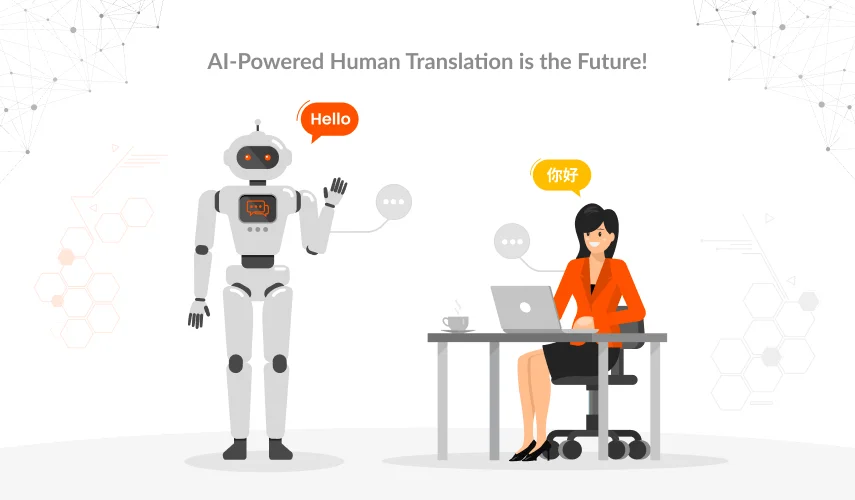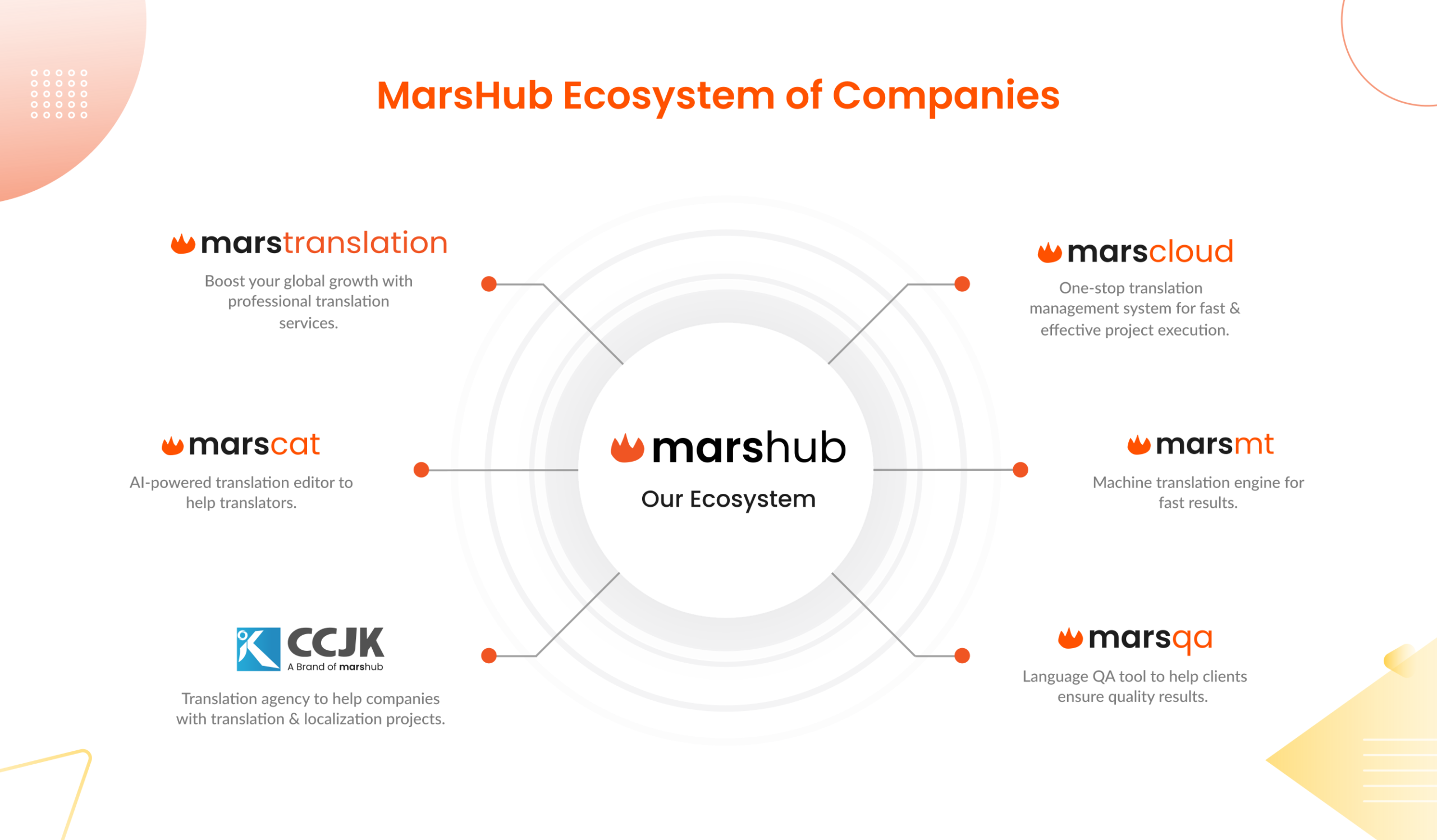The world is continuously evolving, and so is the global business landscape. Today, we can see the smooth and free flow of information worldwide, which makes communication in different languages more critical. Linguistic barriers have been there over the past few centuries. From translating the classic literature to the spread of different empires and colonial governments, language diversity always stood as an obstacle to gaining knowledge, ruling indigenous people, or trading goods to far-off places.
We live in this capitalistic world, where most governments provide subsidies to entrepreneurs and encourage startups. Here, we see fewer trade restrictions and free market economies that make it less complicated and seamless for businesses to go global. Even in this favorable business environment, language emerges as a big challenge for many global companies. Without breaking the language barriers, global brands can never be able to engage with overseas customers, communicate with them, and maintain their relevance in this highly competitive market. Professional translation software emerges as a great solution to these linguistic challenges for global businesses. Let’s figure out the significance and credibility of language translation software to eliminate linguistic challenges.
What Is Translation Software?
Language translation software, also referred to as machine translation software, is a system or application designed to automatically translate text from one language (the source language) to another language (the target language). This software uses powerful AI algorithms and big datasets to create accurate and relevant translations in a few seconds. Professional language translation software is used by global enterprises, translators, and language service providers to effectively manage their translations in the most cost-effective manner. The specifications of each translation system may vary based on its scope, objectives, and targeted niche or language pairs. Some software is designed for generic use, while others have advanced capabilities to translate highly technical legal and medical documents.
How Does Translation Software Work?
To critically evaluate the capabilities and limitations of translation software, you must first understand how it works. Professional translation systems use AI algorithms along with other language models to analyze the source text and convert it into the target language. Here is a brief overview of how translation software goes about the translation process.
1. Analyzing the Text
The first step is to analyze the source text and break it down into smaller segments. It allows the software to dissect the sentences to make sense of their structure, grammar, and punctuation.
2. Language Translation Models
Today, most translation tools employ neural translation models that use deep neural networks to translate any text. Similarly, there are rule-based models that follow predefined translation rules and patterns for translation. Statistical translation models, on the other hand, use statistical analysis for translation generation.
3. Contextual Analysis
If you are using a neural translation model to translate, it performs a contextual analysis of the source text. It will significantly improve the translation’s accuracy and relevancy.
4. Post Processing
In the post-processing step, the translated text is reviewed for grammatical, typo, and logical mistakes. The overall format and style of the document are also adjusted at this stage.
5. Final Outcome
You see the final outcome of the translated text in the software, which you can then download or copy.
What to Look For In Professional Translation Software
Now that we have understood the workings of translation software, you must wisely choose the best language translation software based on your unique requirements. While looking for software for translating languages, here are a few factors you need to consider:
1. Automation
Modern translation software comes with automation that makes the translation generation process very efficient and fast. You don’t have to waste your precious time manually adjusting the formats, or preparing the source files for the system because the software tool will adjust everything on its own, eliminating the manual hassle. It will also help you speed up your translation process and manage your work in the quickest turnaround.
2. Usability
The software must have an intuitive user interface that makes it seamless for you and your teams to use it effectively. If you are using user-friendly software, then you don’t have to provide excessive training to your linguists and other staff dealing with translation tasks.
3. Transparency
High transparency means your software provides detailed insights into the whole translation process. It allows you to watch how the translations are actually created and what are the preferences of your software to arrive at certain translation outcomes. This way, translators can better comprehend how the software works and how they can use it effectively to generate desirable outcomes.
4. Industrial & Linguistic Expertise
Every translation software has its own linguistic proficiencies and industrial expertise that should be considered. For instance, if you want to translate medical documents, you should get a subscription to software specialized in medical translations. Generic software may not be able to comprehend or accurately translate the technical medical terminologies, so you must choose your software accordingly.
5. Glossaries
While translating content for your business, you have to be very careful about terminology and tone consistency. Your brand must have one voice only. Translation glossaries allow you to maintain a unified brand voice in all markets. Moreover, glossaries also help to ensure that the translations contain industry-specific terminologies that are also preferred by the client.
6. Customization
If your software provides customization features, you will be able to tailor the features to your requirements. It also allows you to scale up or down your software specifications, considering changing translation needs. You can start with a standard package and move to advanced customization as your translation needs increase.
7. Security
It is always a threat to security when you upload your data or information to any third-party software. It makes it essential to look for what security measures software is performing to prevent data breaches and information theft. You must also ensure they are following standard security regulations and provide data encryption.
How Can a Language Translation Software Support Global Enterprises?
Huge linguistic challenges are faced by global enterprises, and the demand for professional translation is also continuously increasing. Let’s have a look at the use of language translation software for global enterprises.
1. Manage High Volumes of Translations
International business requires translation into multiple languages on a regular basis. From websites and marketing material to business legal documents and product descriptions, everything has to be translated into native languages. Translation software can be quite beneficial for businesses that have to deal with large volumes of translation to communicate with their customers in their local languages.
2. Manage Strict Deadlines
Businesses have to follow strict content calendars and client deadlines that require them to generate translations super fast. Language translation software allows enterprises to speed up their product launches, marketing campaigns, and overall multilingual content strategies.
3. Support Translation Teams
They don’t have to make their internal and external translation teams exhausted with an excessive translation workload. The machine translation post-editing method is widely employed by enterprises to enhance the productivity and performance of their translators. Moreover, your translators are less likely to make mistakes and focus on creating more relevant and accurate translations.
4. High Scalability
Global enterprises are constantly looking for opportunities to tap into new markets. Advanced translation software allows businesses to scale themselves in foreign markets seamlessly. This software accommodates the increasing translation needs of businesses. Enterprises can easily enhance their software specifications to manage large-scale translation projects.
How Can Language Translation Software Support Professional Linguists?
Not just enterprises, but professional translators also use language translation tools to manage their day-to-day translation tasks for multiple clients. Let’s have a look at the use of language translation software by professional translators.
1. High Productivity
Translators can significantly enhance their translation productivity and overall work efficiency by using these professional translation tools. Linguists get the initial translations for their documents through machine software and edit them to remove any inaccuracies and readability issues. It also allows the linguists to focus more on refining the machine translations and enhancing their speed and performance.
2. Save Time
Freelance translators have to work on strict deadlines, which makes it super challenging for them to manage their work on time. Using professional language translator software allows the translators to speed up the translation process and avoid delays in translation delivery. This way, translators can manage to meet their commitments and build a good reputation in the market.
3. Quick Translations
Translators have to deal with clients from different parts of the world. Sometimes they required quick translation solutions to respond to the emails and messages of clients. Similarly, instruction guides for translation can be translated into many cultural languages in just one go with a translation tool. Professional language translator software is a great option to promptly respond to clients and other team members.
Challenges and Limitations of Translation Software
While there are several benefits to using professional software for translating languages, you must also be mindful of its limitations. Understanding both the pros and cons will help you better use this software in the most effective way.
1. Lack of Contextual Understanding
Advanced machine translation tools use modern technology that can literally blow your mind. However, technology is not perfect either. In the case of professional translation tools, they may struggle to understand the context of your original text.
So, there is always some likelihood that your software may misinterpret the source text and provide irrelevant translations. Your machine-translated content required post-editing by professional linguists to avoid this issue.
2. May Ignore Cultural Nuances
There is a high chance that your machine translation software will totally overlook cultural references and nuances while doing translations. It is the main reason why most automated translations lack cultural appropriateness and emotional depth. Keeping this in mind, you must get your machine translation reviewed by native translators, who will give the translation a human touch and make it more culturally resonating.
3. Not Proficient in All Language Pairs
When it comes to linguistic proficiency, your language translator software may have some limitations. For instance, if you are targeting seven different regions, the software may not be proficient in all language pairs. In this scenario, one software may not be enough to translate your content into different languages. Similarly, some language pairs have developed translation models, while others may have limited data that makes the translation in these specific language pairs less accurate.
4. File Format Compatibility
Some translation systems may not support all file formats. So, to translate your text in software, you first have to adjust the formatting of the source file. It also takes a lot of time and makes it more challenging for translation teams to keep changing the formats of their documents.
5. Errors in Source Text
If there are mistakes in your source text, your language translator software may struggle to comprehend the text, leading to poor translations. While uploading your source text into any software, you have to proofread it and remove all sorts of grammatical, typo, and contextual mistakes.
Summing Up!
In this article, we have critically analyzed the role of professional translation software in optimizing the translation generation process. It is a great tool for global enterprises and linguists to carry out their regular translation tasks more effectively and faster. Translation tools come with wonderful features that can support translation teams to manage more work in less time. It also helps you get away with tight translation deadlines and avoid frequent delays. However, you have to be aware of the limitations of these tools and always post-edit your machine-generated translations by a professional human linguist.



